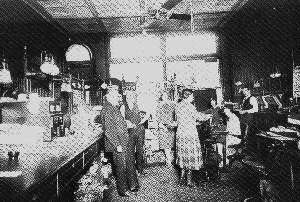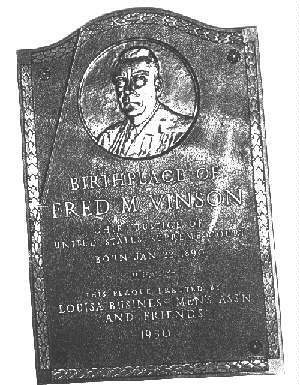Lawrence County, Kentucky
Lawrence County lies on the north-eastern portion of Kentucky and is bounded by Johnson, Martin, Carter, Elliot, Morgan, and Boyd counties. It is composed of 272,000 acres formed from parts of Floyd and Greenup counties. Lawrence County was named in honor of Captain James Lawrence, a distinguished naval commander, who was mortally wounded in a battle between the States frigate Chesapeake and the British frigate Shannon during the War of 1812. The commander's last words were, "Don't give up the ship." Lawrence County is drained by the Big Sandy and its tributaries. Although hilly and broken, the soil is fertile and corn, hogs, and cattleare extensively raised. Coal of fine quality is abundant, as well as iron ore.
The first known settler of Lawrence Counyy was a trader by the name of Charles Vancouver. He obtained a land grant near the forks of the Big Sandy and promoted a "short cut" to Virginia. His ill fated settlement, established in 1789, was short lived. Frederick Moore, migrated from Phadelphia in 1815. He brgan a second settlement, Louisa, at the junction of the two main forks of forks of the Big Sandy, the Tug and the Levisa. Louisa is beautifully laid out with quaint streets, some which remain cobblestone. The town has a wide interest and spirit of civic pride, both educationally and religiously. Louisa encompasses a two-thousand acre tract of land surveyed by George Washington in 1769.
Industry developed in Lawrence County before it did in most other mountain counties because of easy access to the Ohio River. River transportation by barges facilitated the development of the coal industry during the 1850's. Timber in fine quality also abounded, and hundreds of rafts of saw logs annually floated down the Big Sandy to market below.
Subsistence farming, along with hunting and limited timber harvesting, was the principal occupation of most county residents during the nineteenth century. The principal agricultural products of the county of which there is a surplus produced for market, are corn, oats, and wheat, corn having the greatest.
Lawrence County's population was 6,281 in 1850. Showing an increase, it reached 20,067 in 1910, but has steadily decreased over the years.
Time Line and Interesting Facts
1674 - Gabriel Arthur becomes first white man to pass the forks the Sandy
1792 - Louisa settles the boundary between Kentucky and what was then Virginia
1794 - Charles Vancouver's settlement is abandoned
1815 - Frederick Moore arrives and plans foundation of a community
1822 - Louisa makes its original city boundaries
1847 - Organized mining begins
1861 - 14th Kentucky Infantry formed in Lawrence County founded
1870 - Lawrence County's "Golden Period" begins
1875 - First High School in Lawrence County founded
1890 - "Golden Period" ends
1922 - Hundred Year celebration in streets of Louisa
1945 - 2500 of Louisa's soldiers come home from the World War 2
1946 - Louisa native Fred Vinson becomes Chief Justice of the Supreme Court
1965 - Elliott Jones becomes first black elective official in Eastern Kentucky
1993 - Yatesville Lake is impounded and measures 2,242 acres
1996 - Lawrence County native, Paul Patton, is elected Governor of Kentucky
A Pictorial History Of Lawrence County

 (Left) An early boat that transported people up the Big Sandy River.
(Left) An early boat that transported people up the Big Sandy River.
(Right) A covered bridge that was built in the 19th century.

 (Left) First National Bank of Louisa in 1928.
(Left) First National Bank of Louisa in 1928.
(Right) Plaque, honoring Lawrence County native and U.S. Supreme Court Justice, Fred M. Vinson.

 (Left) The first courthouse in Lawrence County.
(Left) The first courthouse in Lawrence County.
(Right) The new high school in Lawrence County.
BACK HOME

 (Left) An early boat that transported people up the Big Sandy River.
(Left) An early boat that transported people up the Big Sandy River.
 (Left) First National Bank of Louisa in 1928.
(Left) First National Bank of Louisa in 1928.
 (Left) The first courthouse in Lawrence County.
(Left) The first courthouse in Lawrence County.